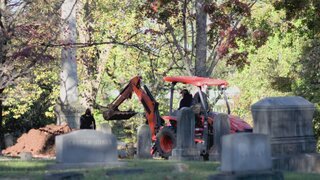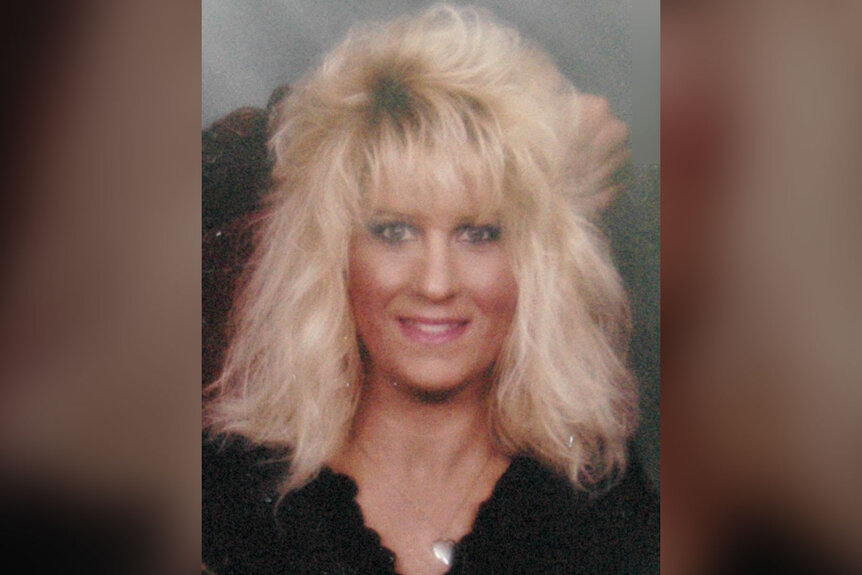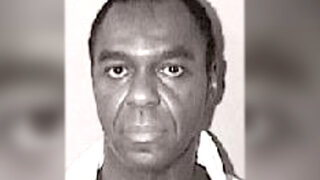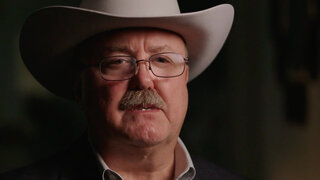Create a free profile to get unlimited access to exclusive videos, breaking news, sweepstakes, and more!
After A Skeleton Is Found, 2 Autopsies And An Exhumation ID A Jane Doe and Lead To Her Killer
Lonnie Kerley always insisted his long-term girlfriend, Danna Dever, walked out on him and simply disappeared in 1996. Dever's family never believed it.
For decades, Danna Dever's family had no idea what actually happened to her after she vanished one spring day in 1996. They were told by her partner that she’d walked out of their Cordelia, California home and he hadn’t seen her since. The family had their suspicions about this story. But concrete answers about Dever’s fate didn’t emerge until unidentified remains were discovered in the desert and an exhumation was later performed — finally revealing what happened and ultimately pointing investigators to her killer.
Dever, 34, was reported missing on August 5, 1996, by her long-term boyfriend, Lonnie Kerley. The pair had gotten together when Dever was 21 and soon had a daughter, though they never married. After she disappeared, Kerley told the Fairfield Police Department he and Dever had gotten into a fight on June 14, and she had left with just the clothes on her back and her purse. It wasn't unusual for her to leave after a fight, he claimed, but she’d been gone for weeks and he told them he’d become worried.
"We needed to find out if there was any evidence there were other things going on, or if she was simply missing of her own accord," Detective Steven Trojanowski with the Fairfield Police Department told "Exhumed," airing Sundays at 7/6c and 8/7c on Oxygen.
Police canvassed the neighborhood, but no one said they had seen anything amiss. They then went to speak to her family, who said that they also hadn't heard from her. Kerley had suggested Dever was involved with drugs and maybe ran off with her dealer, but her family swiftly shut down that notion — they insisted she was very close with her daughter and that she would never leave the girl.
Instead, the family turned police toward Kerley, claiming he abused the young woman.
"He started becoming this mean guy. She did have marks on her body. It wasn't just her arms. She had marks on her face and her stomach. She wanted to get away from Lonnie," her niece, Brittany Carlisle, told producers.
When authorities began to eye Kerley, he provided a witness in his mother, who told them she was there the morning Dever walked out. She said Kerley had called her to help his daughter get ready for school. Dever was upset that morning, his mother claimed, and she told detectives that she suspected Dever was having an affair.
Without any concrete information or new evidence emerging, the case soon went cold. But the situation didn’t look good for Dever or her family, who wanted answers.
"She had not been seen, she had not used credit cards. All the indicators were she was not alive," Trojanowski told producers.
Eleven years passed before the Fairfield Police Department decided to reinvestigate old missing person cases, and in May 2007, detectives were back on the hunt for Dever. Investigators rechecked unidentified bodies found around the time Dever disappeared to see if any were a match — there was one.
The body of Jane Doe #7, as she was labeled, had been found in Rio Vista, California by two ranch hands about a month after Dever vanished. When the skeletal remains were discovered underneath a green blanket in a field, Solano County investigators rushed to the scene. But there was no other evidence to be found, and little could be extracted from the remains.
"You have a completely naked body that’s decomposed to the point where there couldn't be identification," Krishna Abrams, the Solano County district attorney, told producers.
But all these years later, major details originally gleaned from the skeletal remains seemingly matched to the Dever case, including the height and stature of the skeleton, and the fact the pelvic bone suggested this was a woman who had once given birth. Detectives were initially disappointed by the first autopsy conducted on the remains, which resulted in the cause of death being undetermined. It also suggested the victim had been dead for six months when it was found, meaning it couldn't be Dever.
However, when looking through Jane Doe #7's file in 2007, investigators learned that a second autopsy had been performed in 1998 by an anthropologist at Chico State University, who disagreed with the prior timeline, saying that with the California heat a body decomposes more rapidly. He suggested Jane Doe #7 had been dead for less than six weeks when found. That timeline matched with Dever's 1996 disappearance.
There was still some skin attached to Jane Doe #7’s right thumb, and detectives were able to compare the fingerprints: It was a match. Dever’s body had been found, and her family, while still uncertain about how she died, was finally able to lay her to rest.
Investigators then brought Kerley in again for questioning but he refused to admit any involvement in Dever’s death. So they decided to turn their attention to his wife, Laura Miller. She admitted to police that Kerley was emotionally and occasionally physically abusive to her, and told them about odd comments he made at times — even asking what she would do if she learned that someone she loved was a murderer. When asked if she thought he killed Dever, she said she believed it was possible.
"I wanted to tell them everything and this is my time to do it," Miller recalled to producers.
Still, even after obtaining a warrant to search Kerley's residence, police lacked crucial hard evidence needed to form a solid case. The investigation again went cold until 2010, when it was reopened with Abrams joining the team. Detectives decided they needed to find the car Kerley would have used to transport Dever's body. They soon tracked down the vehicle and carefully combed it for evidence. In the trunk, they found a single pubic hair — it was a match for Dever. Police believed this proved Kerley had brought Dever's body to Rio Vista in his trunk.
Then, Dever's friends and loved ones came then forward to tell investigators of how Kerley severely abused her while they were together in the 90s. Carlisle told producers Kerley once kicked Dever in the stomach when she was pregnant.
"One of the things Dana always told her friends: 'He'd said he'd dump me in a ditch so deep nobody would find me," Abrams told producers.
Investigators also learned Kerley had been arrested on domestic violence charges in January 1996. Dever unsuccessfully tried to have the charges against him dropped, and they were due in court on June 19, 1996. Kerley showed up to court, but Dever, whose testimony was central to the case, was a no-show — she had vanished for good a few days earlier, on June 14. The charge was then dropped to a misdemeanor and Kerley was sentenced to one-year probation. Authorities now had a solid motive for the murder that they suspected.
Soon, Kerley was arrested on a murder charge. However, the original autopsy had said Dever's cause of death was undetermined. To ensure he would successfully be put away, they decided to exhume Dever's body. Investigators were able to find cracks and fractures in the bones, proving Dever had been beaten both in the past and at the time of her death — and that she had been strangled.
To further illustrate how badly Kerley had hurt Dever, Abrams showed her bones to the jury, so they could see the many fractures in her bones for themselves.
“The jurors learned that, over a period of 10 years, Kerley regularly punched and kicked Dever, slapped her, threw her to the ground when she was pregnant, punched and kicked her when she was pregnant, restrained her from leaving the home, stalked her, beat her in the back of the head with a two-by-four, mopped the floor with her face and hair, kicked her in the eye, stomped on her, and repeatedly threatened to kill her,” according to a ruling obtained by Solano County's Daily Republic in 2018.
In January 2013, Kerley was found guilty of second-degree murder and sentenced to 15 years to life in prison.
"Through the body being exhumed, we had the ability to tell the story of the injuries found on her bones. The jury had nothing else to believe," Detective Bill Hornbrook with the Solano County Sheriff's Office told producers.
For more on this story and others like it, watch "Exhumed," airing Sundays at 7/6c and 8/7c on Oxygen or stream episodes any time on Oxygen.com.


































